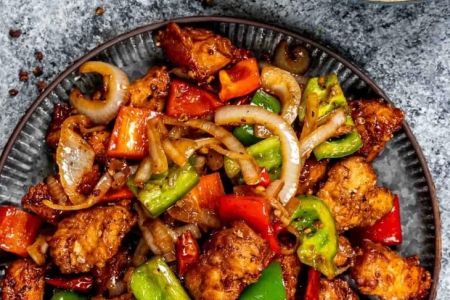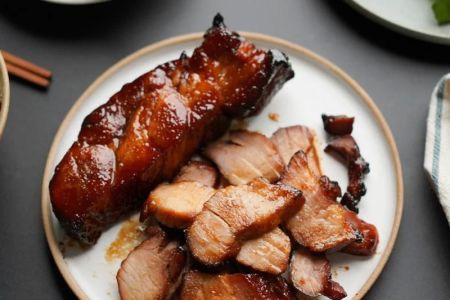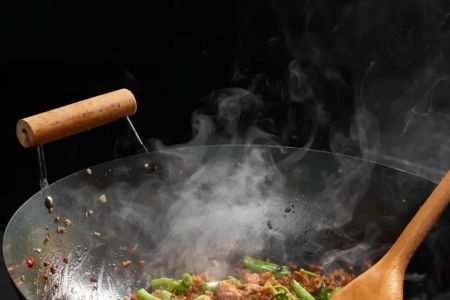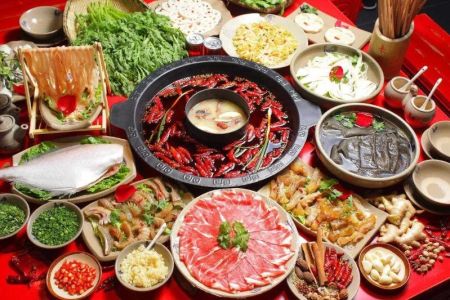The Evolution of Chinese Food in America
As someone who has grown up experiencing the wonders of Chinese food in America, I’ve seen firsthand how it has evolved over the years. From humble beginnings in Chinese immigrant communities to becoming one of the most beloved cuisines in the country, Chinese food has a fascinating history here. The story of Chinese food in America is one of adaptation, innovation, and cultural exchange. In this article, I’m going to take you through the transformation of Chinese cuisine in the United States, and how it came to influence not only American food culture but also global dining trends.
1. The Early Days: The First Chinese Restaurants in America
Chinese food in the U.S. didn’t start off as the bold, flavorful dishes we know today. The first Chinese restaurants in America appeared during the mid-19th century, mostly in areas with large immigrant populations, such as San Francisco and New York City. Chinese immigrants, who had originally come to the U.S. for the California Gold Rush and railroad construction, started opening small eateries to cater to fellow immigrants.
Initially, Chinese food was met with some resistance from the mainstream American population. Most Americans weren’t familiar with the ingredients or the techniques used in Chinese cooking, and many viewed the food as exotic or even unappetizing. However, as Chinese communities grew, so did the popularity of their food. By the late 1800s, Chinese food had started to gain a foothold in the country, particularly among working-class Americans who enjoyed the affordable and filling nature of the cuisine.
2. The Creation of “Chop Suey”: Americanizing Chinese Food
One of the pivotal moments in the history of Chinese food in America was the creation of “chop suey.” It was a dish invented by Chinese chefs in America, and it was a blend of various Chinese ingredients cooked together in a savory sauce. While chop suey has roots in Chinese culinary traditions, it was adapted to fit American tastes, with ingredients like chicken, pork, and beef being used more frequently than the traditional Chinese vegetables and meats.
Chop suey was a huge hit, particularly in the early 20th century, and it helped to define the idea of Chinese-American cuisine. The dish was easy to prepare, customizable, and offered a bit of the “exotic” with its stir-fry cooking technique, but it still appealed to American palates. This led to the widespread establishment of Chinese-American restaurants across the country, making Chinese food a more familiar and accessible option for Americans of all backgrounds.
3. The Impact of World War II: Chinese Food Goes Mainstream
During and after World War II, Chinese food began to see a major surge in popularity in America. The war had brought more awareness of Asian cultures to the American public, and many soldiers stationed in the Pacific had encountered Chinese food for the first time. This helped to break down barriers of unfamiliarity with Chinese food. As Chinese immigrants continued to thrive, many opened restaurants catering to the growing demand for more diverse dining options.
Furthermore, as American society became more multicultural in the post-war years, the tastes of the American public became more adventurous. Chinese food was no longer just a niche option for immigrants—it had become a mainstream cuisine. Restaurants like the famous Chinese-American chain, P.F. Chang’s, started offering Chinese-inspired dishes that blended traditional flavors with modern twists, catering to the evolving American food scene.
4. The Rise of Regional Chinese Cuisines: From Cantonese to Szechuan
In the latter half of the 20th century, as Chinese food became increasingly popular in the U.S., more regional Chinese cuisines began to be represented. No longer limited to just Cantonese food, which had been the dominant style in early Chinese-American restaurants, the U.S. saw an influx of other regional flavors. Szechuan cuisine, with its bold use of chili peppers and spices, became a favorite in cities like New York and Los Angeles.
The introduction of more authentic regional dishes, such as Peking duck, dumplings, hot pots, and more, allowed American diners to experience the true diversity of Chinese food. As Chinese restaurants grew more sophisticated, so did the appreciation for the complexity of Chinese cooking. Many of these restaurants focused on authentic ingredients and cooking methods, offering a more traditional experience that appealed to both the Chinese community and adventurous American diners.
5. Fusion and Innovation: Modern Chinese Food in America
In the 21st century, Chinese food in America has undergone further transformation with the rise of fusion cuisine. Chefs began combining elements of Chinese cooking with American ingredients and culinary techniques to create unique dishes. From the creation of “General Tso’s Chicken” (a distinctly Americanized version of chicken) to dishes like “Kung Pao Tacos,” the lines between Chinese and American food continue to blur.
In addition to the fusion movement, we’ve also seen an explosion of regional variations of Chinese food in American cities. For example, the “Chinese BBQ” style, popular in San Francisco, offers marinated and roasted meats like pork belly, duck, and sausage that are hard to find in traditional Chinese-American restaurants. This diversity is a testament to the ongoing evolution of Chinese cuisine in America, as chefs continue to experiment and introduce new flavors to the market.
6. The Growing Trend of Health-Conscious Chinese Food
In recent years, there has also been a growing trend of health-conscious Chinese food in America. As Americans become more aware of nutrition and dietary restrictions, Chinese restaurants have started adapting their menus to include more plant-based, low-calorie, and gluten-free options. This change has allowed Chinese food to stay relevant and popular even as food trends evolve toward healthier choices.
Many Chinese restaurants now offer organic ingredients, fewer fried dishes, and more vegetables, catering to the growing demand for nutritious, sustainable food options. With the rise of vegetarian and vegan diets, more plant-based versions of Chinese staples like mapo tofu, spring rolls, and fried rice have become available, providing healthier alternatives without sacrificing flavor.
Conclusion
The evolution of Chinese food in America is a fascinating journey of adaptation and innovation. From the early days of chop suey to the rise of regional Chinese cuisines and the fusion movement, Chinese food has become an integral part of American culinary culture. Today, the influence of Chinese food can be seen in everything from casual takeout to upscale fine dining. Whether it’s the comforting familiarity of General Tso’s Chicken or the bold, spicy flavors of Szechuan cuisine, Chinese food in America continues to evolve and thrive, offering something for everyone.
OLD Keywords-33: SEO Title: The Evolution of Chinese Food in America SEO Keywords: Chinese food, American Chinese cuisine, chop suey, regional Chinese food, fusion Chinese cuisine, Szechuan, Cantonese, General Tso’s Chicken, health-conscious Chinese food SEO Description: Discover the fascinating history of Chinese food in America, from the early days of chop suey to the rise of regional cuisines and fusion food. Learn about the evolution of Chinese cuisine in the U.S.





![Top Chinese Restaurants for Authentic Cantonese Cuisine in [Your City]](https://img.gochinarose.com/d33/2507/4157910400_450x300.webp)
